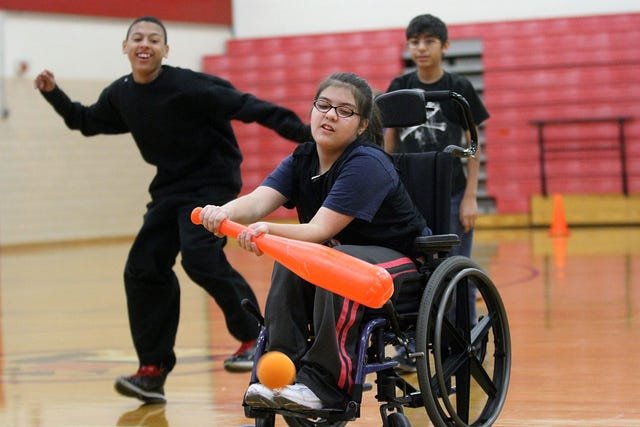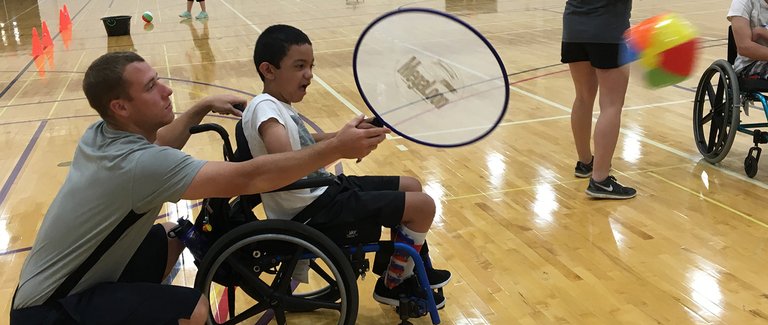ADAPTED PHYSICAL EDUCATION
This is an extension of regular physical education programmes modified and adjusted to enable individuals who are handicapped participate in sports.
A handicap is a person with a deficiency or deviation from the normal person either by accident, infection, inheritance (heredity), or nutrition, etc.
Many individuals of all ages are identified as needing special education service because of their handicapped conditions. These handicapped conditions most prevalent are as follows:
Auditory impairments: This is an impairment that affects the hearing ability of an individual
Physical impairment: These are individuals with functional limitations related to physical ability examples cerebral palsy (which is caused by brain damage before, during and after birth), muscular dystrophy (which is a progressive muscle weakness, awkwardness and slowness in movement), spinal bifida (which is a defect in development of the cerebral column which damages the spinal cord and nerve roots causing related neurological deficits).
Orthopaedic impairment: This refers to the incomplete use and functions of the bones, joints and tendons associated with the limbs examples amputees, the arms and legs
Visual impairment: This is an impairment that affects the visual ability of an individual thus can only read via braille if complete blindness or with corrective glass if partial blindness
Mental impairment: This type of impairment has to do with mental retardation and general intellectual functioning, existing concurrently with deficits in adaptive behaviour
Assorted impairment: This is a situation where an individual may have more than two or more handicapping conditions at the same time example, a child may be dumb and at the same time deaf
Aims of adapted physical education
The aims and objectives of adapted physical education are tailored towards ensuring a better way of life for the handicapped. Other aims are as follows:
- Societal integration
- Opportunity to get involved in regular activities
- To remove stigma associated with impairments
Limitations involved in organizing physical education programme for the disabled
Misconception about the disabled: People regard the disabled as ‘useless’, ‘helpless’, ‘deadwood’ to the progress of the abled community or society. Some termed them to be invalid people with functional limitations, so people are less concerned in providing social and recreational activities for them.
Teachers preparation: The handlers of the people with disabilities are, in most cases, ‘handicapped’ themselves due to lack of required facilities. Sometimes, they don’t have proper orientation about the problems and limitations of these special beings.
Interest: Are the teachers really committed to the students? Are they really interested in the students? It has been discovered that some of the handlers of the disabled do the job with the mind of getting a better offer.
Facilities: A required facility is another major problem in organizing worthwhile sporting programmes for the disabled. Can the personnel manipulate the available facilities and equipment? However, what happens if the required facilities are not readily available? Teachers find it difficult to improve or provide alternatives.
Time factor: The sufficiency of the time, which signifies that the time schedule for teaching certain concept may not be enough.
Problem of finance: The problem of finance is the bane of most sports programmes. It is needed for the purchase of equipment and to facilitate other aspects of the programme.

